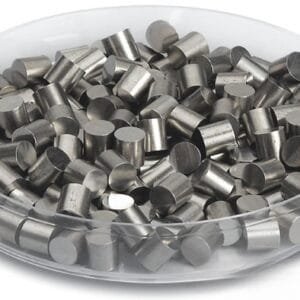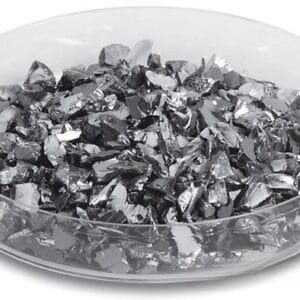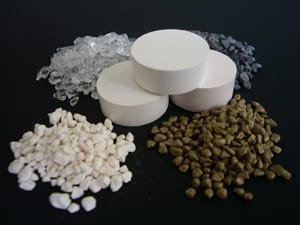Zirconium Nitride Evaporation Materials Overview
TFM provides high-purity Zirconium Nitride (ZrN) evaporation materials, essential for creating high-quality thin films in various deposition processes. With the chemical formula ZrN, our materials are known for their exceptional purity, reaching up to 99.9995% due to our rigorous quality assurance methods.
Related Products
- Zirconium Evaporation Materials
- Nitride Ceramic Evaporation Materials
Zirconium Nitride Evaporation Materials Specification
| Material Type | Zirconium Nitride |
| Symbol | ZrN |
| Appearance/Color | Yellow-brown solid |
| Melting Point | 2,952 °C (5,346 °F; 3,225 K) at 760 mmHg |
| Density | 7.09 g/cm3 (24 °C) |
| Purity | 99.5% |
| Shape | Powder/ Granule/ Custom-made |
Applications of Zirconium Nitride Evaporation Materials
Zirconium Nitride evaporation materials are utilized in:
- Deposition Processes: Crucial for semiconductor deposition, chemical vapor deposition (CVD), and physical vapor deposition (PVD).
- Optics: Ideal for wear protection, decorative coatings, and display technologies.
Packaging and Handling
Our Zirconium Nitride evaporation materials are carefully tagged and labeled to facilitate efficient identification and quality control. We ensure that packaging is robust to prevent any damage during storage and transportation.
Contact Information
TFM is a leading supplier of high-purity Zirconium Nitride evaporation materials, available in various forms such as tablets, granules, rods, and wires. Customized shapes and quantities can be requested. We also offer evaporation sources, boats, filaments, crucibles, heaters, and e-beam crucible liners. For current pricing and inquiries about other materials, please contact us directly.


 MSDS File
MSDS File



Reviews
There are no reviews yet.